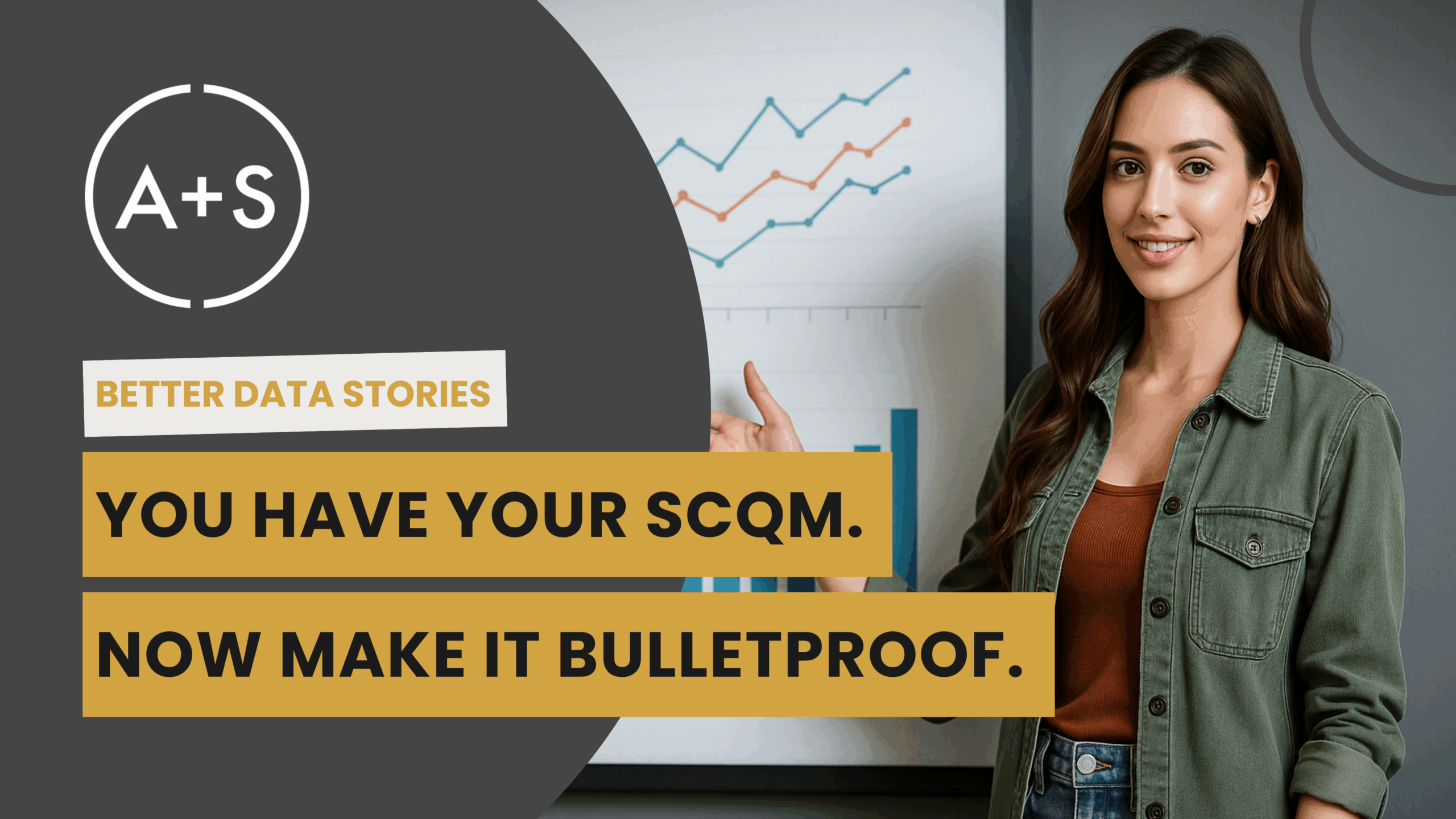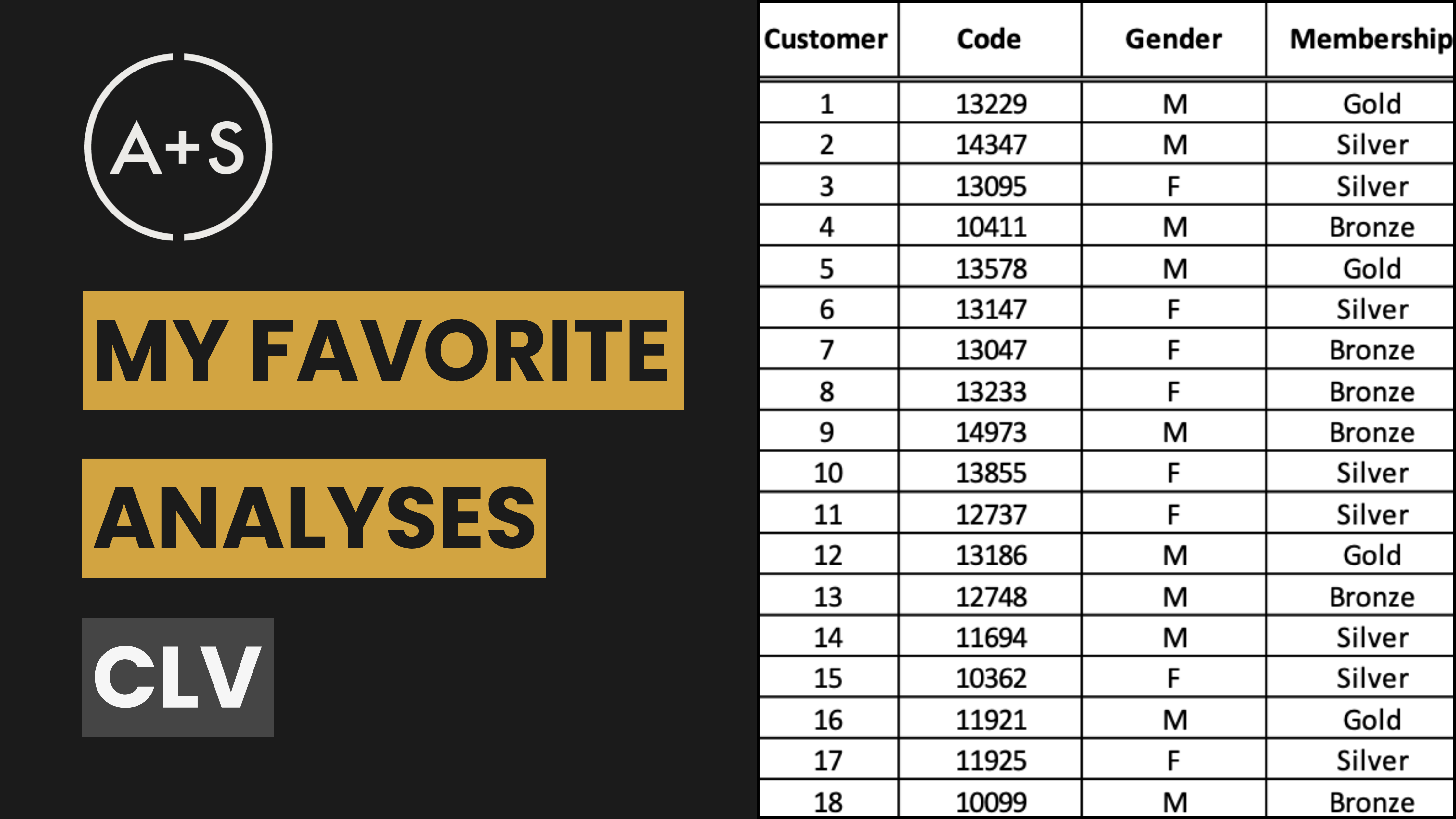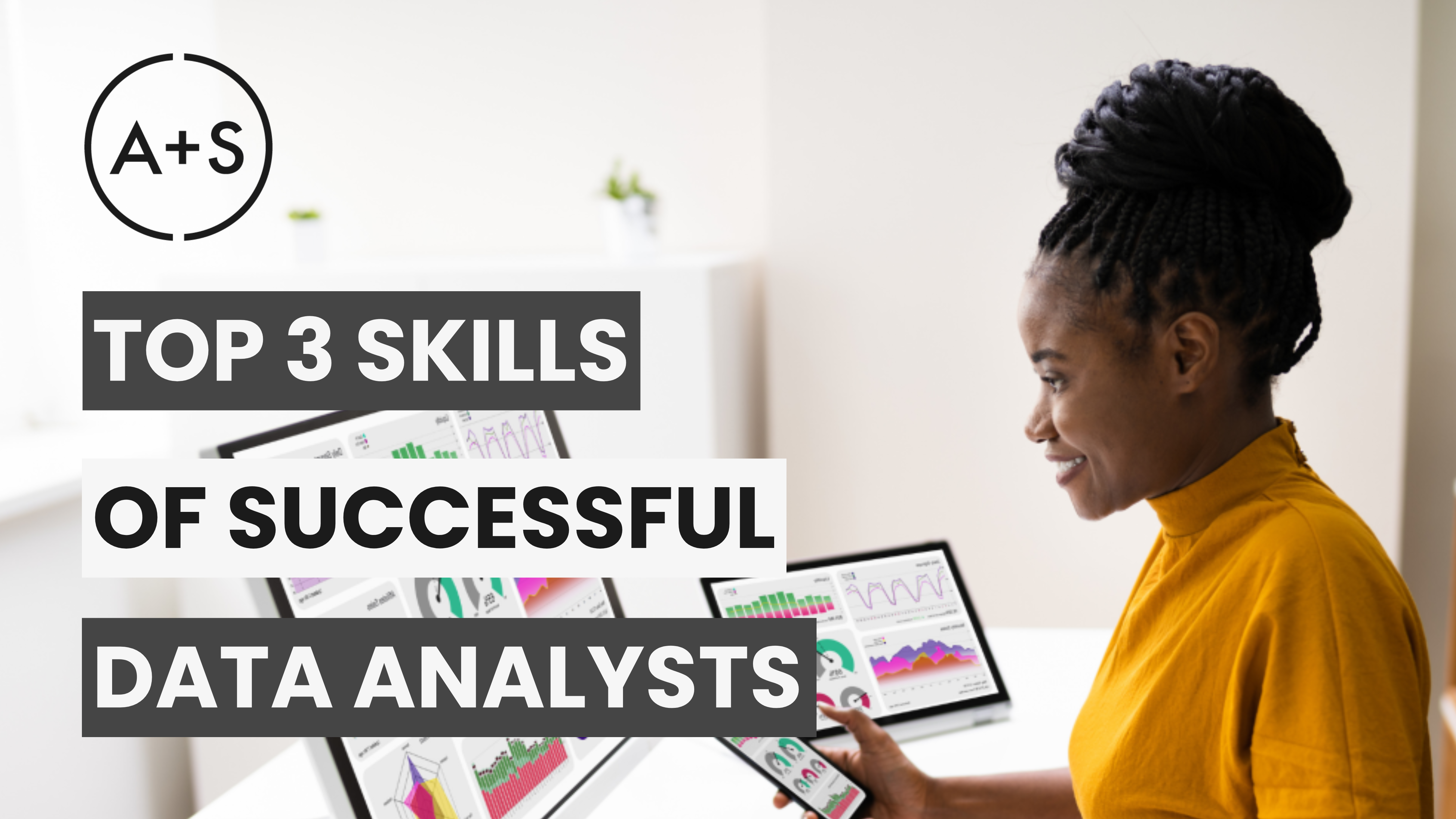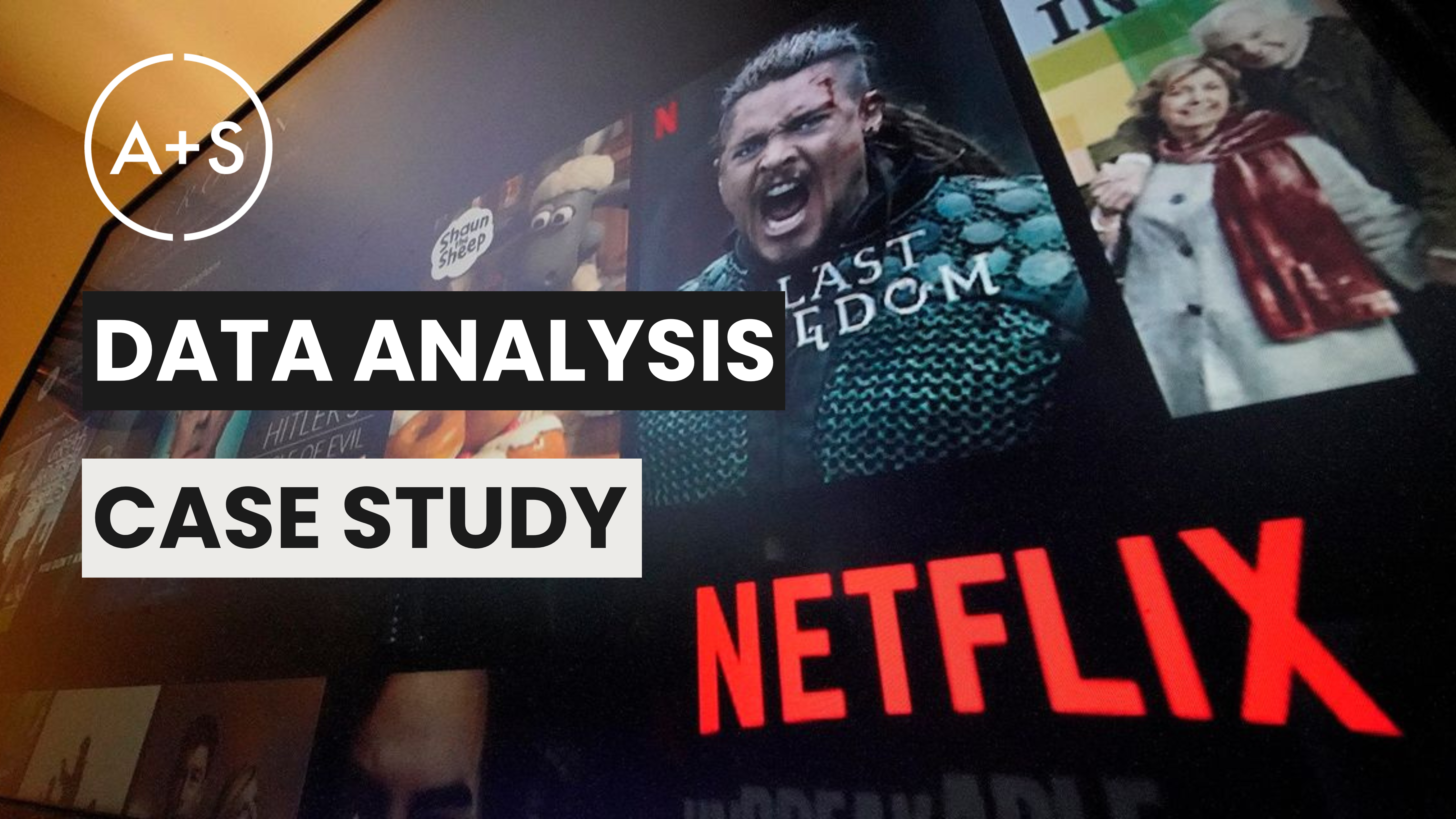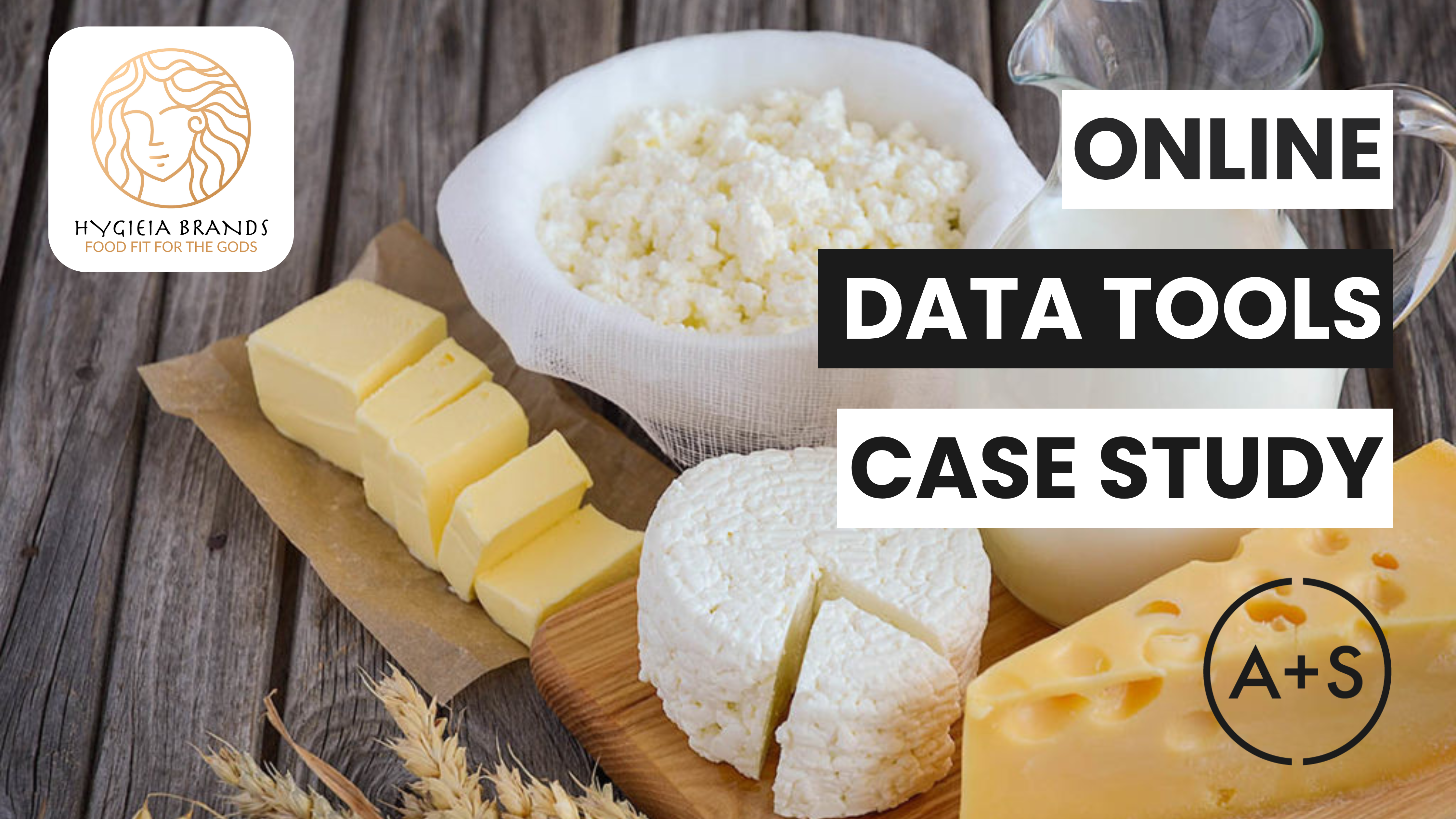Last week, we built the engine for data-driven storytelling. We connected the SCQM framework—Situation, Complication, Question, Main Message—to the deep work of synthesis that creates it. You learned how to produce tension and provide its release by finding the Complication (C) and the Main Message (M).
You now possess a powerful structure for communicating your findings.
But this creates a new, dangerous problem. Having a clear SCQM feels like the end of the journey. You found the insight. You built the story. You are ready to present.
This is a trap.
Your SCQM is not the final product. It is a well-formed hypothesis. It is your single, declarative claim, and you are presenting it to a busy, skeptical human. Their first, unspoken question after you deliver your Main Message will always be, “How do you know?”
If your only answer is “I ran the numbers,” you have already lost.
We ended last week with a promise: to explore the tools, intuition, and human connection that pick up where the high-level SCQM leaves off. This is that post. This is not just about proving your hypothesis. It is about anticipating your stakeholder’s questions so your proof is delivered as the answer they are already looking for.
The Core Concept: Anticipating the Three Questions
The real unlock of a great analyst is not just data acumen. It is stakeholder empathy.
Your SCQM is a powerful claim, but it is presented to someone. That person has their own goals, their own pressures, and their own definition of success. A generic, one-size-fits-all deck of “proof” ignores this reality. It forces them to do the work of connecting your data to their world.
Your job is to do that work for them.
This “human connection” is the most critical and overlooked part of your job. It is not an assumption; it is a process. You build this empathy by working with your stakeholder before the big presentation. You test small hypotheses with them. You ask about their goals for the quarter. You understand the pressures they are under.
This connection gives you a strategic advantage. It allows you to anticipate the three inevitable, unspoken questions they will have the moment you present your Main Message:
- “What exactly did you find?” (The ‘What?’)
- “Why did this happen?” (The ‘Why?’)
- “So what does this mean for me?” (The ‘So What?’)
Your entire presentation—everything that follows your SCQM—must be a direct, overwhelming answer to these three questions.
The Validation Triangle is the framework you use to answer them. Your tools, human connection, and intuition are not abstract concepts. They are the sources of your answers.
- You answer the ‘What’ with your Tools (Quantitative Proof).
- You answer the ‘Why’ with your Human Connection (Qualitative Proof).
- You answer the ‘So What’ with your Expert Judgment (Business Impact).
This is how you move from synthesis to substantiation.
Strategic Framework / Process: The Validation Triangle
Your SCQM is the spine of your argument. The Validation Triangle is the armor you build around it. You deploy each point of the triangle to proactively answer the stakeholder’s three questions.
Pillar 1: Answering “What?” (The Tools) You start with the quantitative proof. This is the foundation. Your stakeholder needs to be anchored in an objective, shared reality.
Your “What?” must be the single “smoking gun” chart or number that proves your Complication (C) is real, measurable, and significant. If your Complication is “Our checkout KPIs all crashed,” your quantitative proof is the funnel analysis showing a 90% drop-off. It is the time-series plot showing cart abandonment spiking from 25% to 50% the instant the new checkout flow launched.
This data answers their first, most logical question. It is not an opinion. It is a fact.
Pillar 2: Answering “Why?” (The Human Connection) The quantitative proof shows what happened. It cannot explain why. This is your stakeholder’s next question, and it is the one most analysts fail to answer.
Answering the “Why?” requires the external part of your “human connection.” You must leave the database to find the human story behind the data point.
Do not guess. Go to the source. Log into Zendesk. Read the support tickets. Open Slack. Ask the customer service manager for the top complaint. Find the verbatim quotes.
When you find it—”I can’t find the ‘Continue’ button, it’s not on my screen!”—you have your ‘Why.’ You have the qualitative proof. This is the explanation for the ‘What.’ It provides the human context the numbers will always lack.
Pillar 3: Answering “So What?” (The Expert Judgement) Now you have two pieces of powerful evidence:
- The Chart: “We are losing 90% of our customers on this page.” (The What)
- The Quote: “The ‘Continue’ button is broken for many users.” (The Why)
Your stakeholder’s final, most critical question is “So what?” As in, “Why should I care? What does this mean for my goals?”
This is where your internal human connection—your empathy for the stakeholder—comes in. This is where you apply your expert judgment. You must connect the ‘What’ and ‘Why’ to the one thing that specific stakeholder cares about.
Do not just report the generic impact. Translate it into their language.
- Generic “So What?”: “This bug is losing us 500 potential new customers every day.”
- Stakeholder-Specific “So What?”: “Losing 500 new customers per day, which puts your quarterly acquisition target of 5,000 new customers at risk.”
This final step moves you from analyst to strategist. You have not just reported a bug. You have identified a multi-channel failure and quantified its precise impact on their world.
The Analyst’s Playbook
- Know Your Stakeholder. This is the real first step. Before you build your “proof” deck, ask: What is this person’s number one goal this quarter? What pressure are they under? What do they fear? What do they want? Write this down. This is your “empathy map.”
- Write Down Your SCQM. With your stakeholder’s POV in mind, frame your SCQM. Ensure the Main Message (M) speaks to their world.
- Isolate the “What?” (The Tools). Find the single “smoking gun” chart that proves your Complication (C). Make it simple, clean, and impossible to misinterpret. This is the answer to their first question.
- Hunt the “Why?” (The External Human Story). Log out of your BI tool. Find the exact quotes from real humans (customers, sales, support) that explain your “smoking gun” chart. This is the answer to their second question.
- Put Them Side-by-Side. This is a powerful tactic. On one slide, show the chart (The What). Next to it, show the customer quote (The Why). This combination is devastatingly effective. It connects the abstract data to a concrete, human problem.
- Calculate and Translate the “So What?” (The Judgment). First, calculate the generic business impact (e..g., “losing 500 new customers a day”). Then, use your empathy map from Step 1 to translate this number into your stakeholder’s specific pain. This is the answer to their final, most important question.
- Assemble Your Story. Your new presentation is not just the SCQM. It is the SCQM followed by the answers to their three questions:
(S) “On Tuesday, we launched our new checkout flow.”
(C) “Immediately, our checkout KPIs crashed.”
(Q) “What should we do to fix our checkout flow KPIs?”
(M) “We must roll back our checkout flow.”“Let’s walk through the proof.
Here is what happened: this chart shows a 90% drop-off on the new shipping page.
Why did this happen? This customer support ticket from Tuesday explains it clearly: ‘The continue button is missing.’ The checkout flow launch was rushed and skipped the full QA testing matrix—resulting in this UX error on the new shipping page.
So what does this all mean? My analysis shows this failure is costing us 500 new customers a day means we will miss your quarterly acquisition target of 5,000 users in just 10 days. This bug is consuming 10% of your entire quarterly goal daily.
Obviously, we must roll back our checkout flow and properly test it before implementing it a second time.”
This is an unassailable argument. You have closed every loop. You have answered every question before it was asked.
Final Thought
An SCQM crafted through synthesis gets you a seat at the table. It proves you are a storyteller. But it is anticipating and answering the three questions that proves you are a leader.
Your value is not just in finding the hypothesis. It is in proving it in a way that resonates with the human you are trying to help.
The Validation Triangle is not a rigid, academic exercise. It is an act of professional empathy. It shows you have thought not just about the data, but about them. This is how you build arguments that do not just get heard. They get acted upon.
This is how you own the room.
Keep Analyzing!
